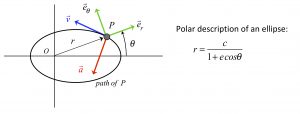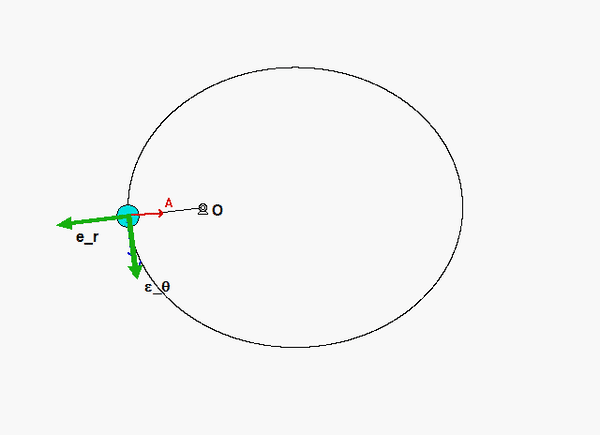
Particle P travels on an elliptical path, as shown above. The equation for an ellipse in polar form is provided above, with the origin of the polar coordinates at point O.
Recall that the radial unit vector er points OUTWARD from O to P, and the transverse unit vector etheta is perpendicular to er and pointing in the positive theta direction. This is shown in the figure above.
The animation below shows the results of a calculation of the velocity and acceleration of P using the above polar description of the path corresponding to a constant theta_dot. Try this out on your own.

As you watch the results above, focus on the orientation of the polar unit vectors with respect to the velocity and acceleration vectors. From this:
- Can you tell when r_dot is positive? Just envision the projection of the velocity vector onto er.
- Can you tell when r_dotdot is positive? This is more difficult - why?